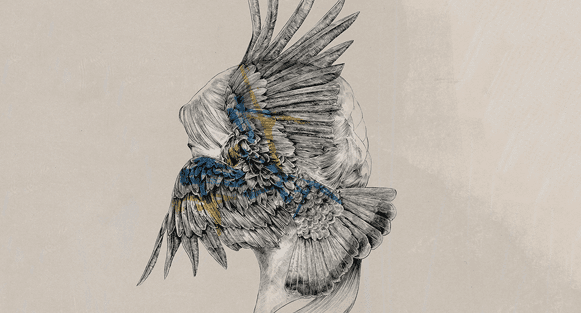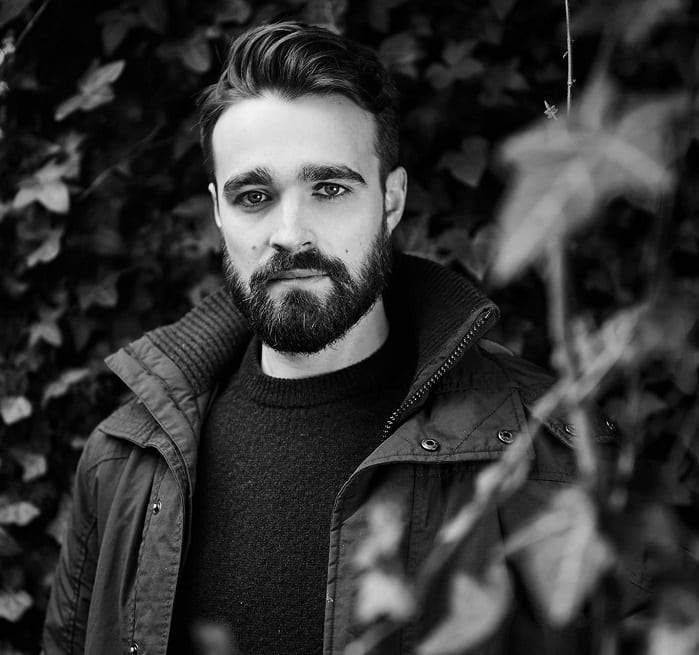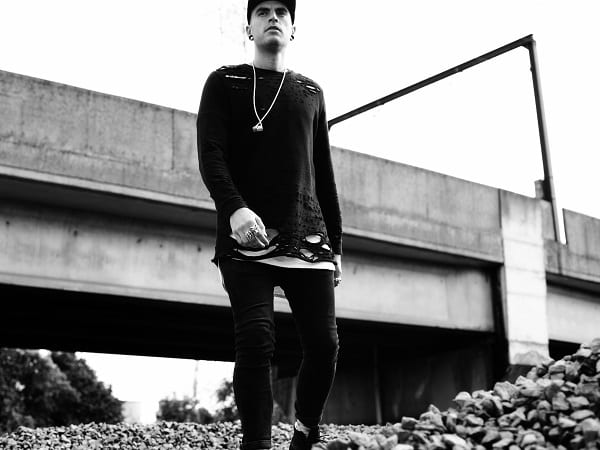Electronic music: the options are endless. Every day new artists, tracks, labels and genres emerge. Content is infinite and inspiration can sometimes be hard to come by in an overly saturated industry.
Unless you’re Nick Kingsley. Better known as Tut Tut Child, he has chosen to take his inspiration from sources other than music. He draws from one of the most famous written works in history, Lewis Carroll’s Alice in Wonderland.
That’s the beauty of creativity, no matter what your form of expression; it may lead to inspiration in a different realm. You could probably guess the root of his inspiration judging by his alias.
“Tut, tut, child!’ said the Duchess. “Everything’s got a moral, if only you can find it.”
His fusion of literature and production has been established since 2012 but it’s reached a new level with his debut album released this week: Come To The End, Then Stop. Intrigued by his association with literature, and the album in general, I asked Nick some questions to understand his creative process and explore his career so far.
You’ve been releasing since 2012, what took so long to complete a full-length album?
“It really has been a long time coming! I struggled for a while really trying to decide what direction to take. My first two EPs were more so following the trends, and I didn’t want to do an album full of trends that are only relevant for a short amount of time. A lot of electronic music has a really short shelf life. It’ll be rinsed in the clubs for a couple of weeks and then it’ll be gone forever. I thought it would be better if I could completely forget about what’s popular and make music you can listen to any time. I don’t want a bunch of singles not related to one another; I wanted it to be one product. And it’s all based around the same concept.”
The concept: Alice in Wonderland. Has this been an ongoing theme in your music previously?
“A lot of it has, I’d say 70% of my previous music did. With this album I’ve taken it even further. Before I would just write with general feelings from the book when I read it, but now I read passages from the book and directly write from them. Usually in the past I would listen to music and try to be inspired, but for this the writing inspires me.
“I’d write a song that would mimic and show what’s happening in that part of the book. I even gave the singers part of the book that I wrote the music around, and then they would write the vocals to match. I also didn’t want it to be something you can only appreciate if you’re looking for Alice In Wonderland stuff, I wanted people to still be able to enjoy the music anyway. It’s finding a balance of music and the story in there.”
What is it about Alice In Wonderland that’s so inspiring?
“I love the book. It has been interpreted over and over, and there are a million different ways you can take it. But there’s something about the original book that stuck with me. I have a really old copy that belonged to my grandmother, and I’ve had it for ages and I still read it. There’s so much wonder you can take from it, and I think that’s such a good jumping off platform for music. There’s so much you can take from music and go in so many directions. And that really comes across in the book as well.”
There are many lessons to be taken from a novel like Alice in Wonderland. What do you want people to take away from your album?
“If I’ve done my job right, people will take away the same kind of theme they’d take from the book. It is different however; I’m trying to put my own spin on it. I’d like people to realize that in electronic music these days, you don’t have to follow the trends, you don’t have to worry about the club friendly bangers, you can still write music that is interesting and still have it appreciated.
There’s very much a beginning, middle and end in the album. The flow doesn’t necessarily follow that of the book, but there are some songs specific to a certain chapter or paragraph.”
The entire album is a blend of multiple genres…
“There has been a big thing with EDM and genres lately. You’ll see a tagline for a genre and you know before you hit play what the song is going to sound like, and people have a tendency to judge by genre before even listening. I got a bit bored of knowing how the song is going to sound; I want to be surprised when listening to music. I didn’t want anything on my album to be predicable. I wanted to go completely the other way and that’s why I didn’t take any influence from other music.”

You’ve just undergone an artwork refocus; tell us about the new bird image.
“It’s a bird in front of a girls face. The artist is a girl called Lauren Crow who is a friend of mine and she does amazing hand drawn pencil sketches. I wanted it to be a hand drawn piece of art, since in the book it’s all hand drawn art. There are quite a lot of recurring animals in the book and originally it was supposed to be the parrot near the beginning of the novel, but its kind of become a bit morphed to cover her face. We wanted it to be quite ambiguous, that’s why it’s covering her face. What really worked was this merging of surreal and real. You almost can’t define between what is the bird and what is the face. It becomes one.”
What’s next?
“I think a music video would work really well with this album and it’s something I’d like to explore. The options are endless when the album itself is so different.
“I’d also really like to develop a live show since the music I write now wouldn’t work so well in a DJ set. I grew up playing guitar, and had always imagined myself pursuing that route, so a live show is right up my alley. I imagine live guitar, keys, and lots of instruments. That’s the direction the album has been going and it would be weird to present this music in a DJ setting.”
Finally… Your favourite character from the book?
“I love the mock turtle, he’s this really desperately sad turtle who’s always crying on the beach and does this crazy dance with the Gryphon. It’s a very surreal thing. He speaks in lots of word play about his growing up and he’s definitely my favourite.”

